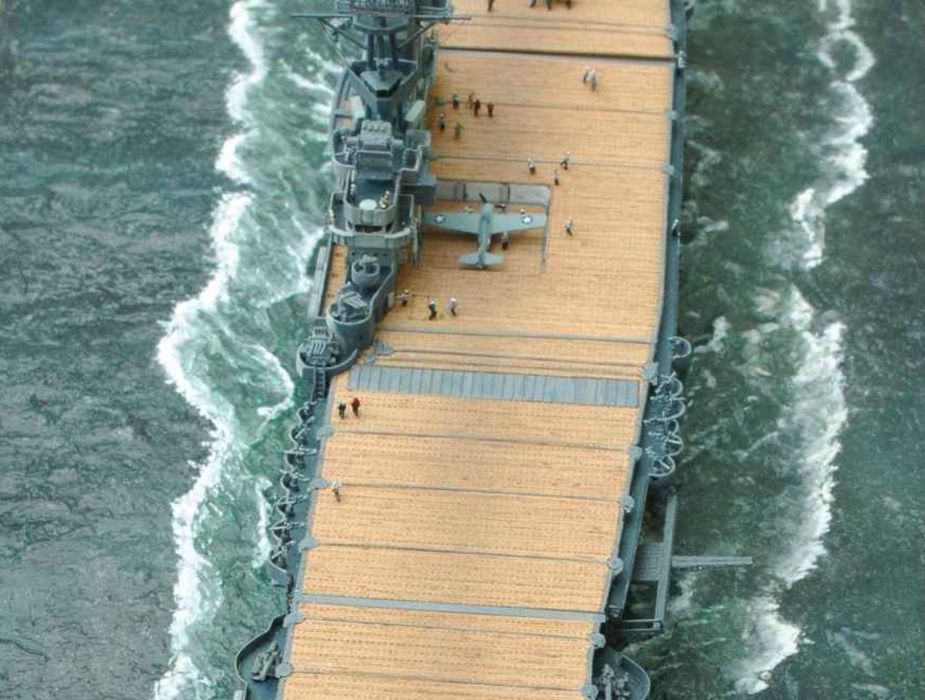
This week’s selection is “Modeling Naval Ships in Small Scales” by Mike McCabe.
This book is all about the very niche hobby of producing small-scale models of large naval ships. You may have seen such models on display, and perhaps wondered how they were made. If so, this book is for you.
It turns out the practice of producing a detailed realistic model is rather complex, involving a number of making disciplines, materials and tools. This is evident when you look at the image above. It’s not a photograph; it’s an image of a hand-made model.
There are several different materials present, and realize also that the water itself is also modeled.
How do you make such a detailed model? That’s where this book comes in.
The book covers the major approaches typically used by modelers, including:
- Tools & equipment
- Using a plastic kit
- Enhancing a plastic kit
- Using resin
- Painting and patinas
- Masts & rigging
- Water bases
The book also covers several case studies where particularly complex ships are reconstructed, such as the Admiral Graf Spee, a German cruiser that was pursued by the British and ultimately scuttled in Montevideo harbor.
Where does 3D printing come into this action? It’s one of the several tools described in the book that should be used in conjunction with other tools for best results.
While it is certainly possible to 3D print an entire naval ship model by simply downloading a file from Thingiverse and hitting the print button, that’s the easy way out. You might get a ship out of that process, but it certainly won’t be nearly as realistic as one made with proper techniques.
In the book 3D printing is used as a way to make accessories, small parts that would otherwise be difficult to build, rather than 3D printing the larger portions of the ship. Author McCabe correctly indicates that the resolution and surface quality of 3D prints can be problematic in model-making.
However, 3D printing is used in another way: as molds for resin casting. Here a modeler would 3D print a negative of a ship’s hull, say, and then clean it up by sanding the surface. Liquid epoxy resin would then be poured into the mold to form a high-quality hull section.
Some readers are model makers, and if interested in branching out into naval ship making, this could be a book of interest.
We’re an Amazon Associate and earn a small fee from qualifying purchases. Help support our 3D print news service by checking out this book!
Via Amazon
